Smoke damage often lurks in the shadows, hidden from plain sight yet capable of wreaking havoc on your home and health. After a fire, it’s easy to think that once the flames are extinguished, the danger has passed. However, smoke leaves behind more than just physical scars; it can infiltrate your walls, furniture, and air, creating long-term hazards. Being aware of the warning signs of smoke damage is crucial to ensure a safe living environment. From unusual odors to discoloration on walls, these subtle indications may signal a more significant problem. In this article, we’ll explore six critical warning signs of smoke damage you should watch for. Understanding these hidden hazards will empower you to take immediate action, safeguarding your home and loved ones from prolonged exposure. Don’t let smoke damage silently compromise your home; let’s uncover the clues and protect your sanctuary together.
Getting to Know Smoke Damage: What It Is and Why It Matters

Smoke damage is an insidious consequence of fires, capable of causing extensive harm long after the flames have been extinguished. Unlike visible fire damage that can be addressed immediately, smoke damage often goes unnoticed until it has caused significant deterioration to your home and health. The microscopic particles in smoke can permeate every corner of your house, settling into porous surfaces and materials. This infiltration can lead to structural compromises, persistent odors, and health problems for the inhabitants.
The composition of smoke is a complex mixture of gases and fine particles resulting from the incomplete combustion of materials. These particles can include soot, ash, and a variety of chemicals, depending on what was burned. After any blaze, walking through a post-fire home inspection checklist can reveal where smoke has settled before it causes hidden damage. The residue left behind can be corrosive, leading to the degradation of building materials and household items. Moreover, the chemicals in smoke can react with moisture and other elements in the environment, creating a toxic atmosphere that poses long-term health risks.
Understanding the nature of smoke damage is crucial because it highlights the need for thorough and ongoing remediation efforts. Ignoring or underestimating smoke damage can result in chronic respiratory issues, skin irritation, and other health problems. Additionally, the structural integrity of your home can be compromised, leading to costly repairs down the line. By recognizing and addressing smoke damage early, homeowners can protect both their health and their investment.
6 Common Symptoms of Smoke Damage You Might Miss
Warning Sign 1: Unexplained Odors
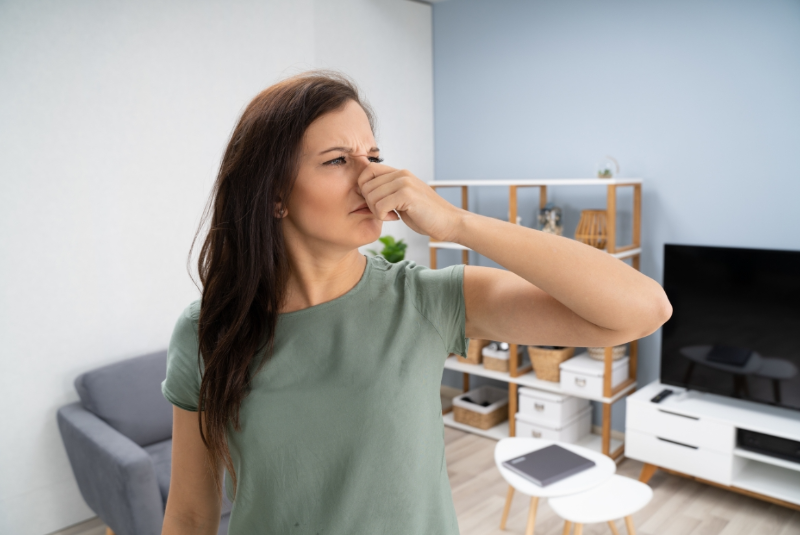
One of the most noticeable signs of smoke damage is the presence of unexplained odors in your home. These odors can be persistent and difficult to eliminate, often indicating that smoke particles have infiltrated various surfaces and materials. The smell of smoke can be particularly strong in areas that were directly affected by the fire, but it can also spread to other parts of the house through ventilation systems and air currents.
Unexplained odors are often a result of smoke particles being trapped in porous materials such as carpets, upholstery, and insulation. Homeowners in Northern Virginia can jump-start recovery with our smoke & odor removal for Lorton, VA, designed to neutralize stubborn smells at the source. These particles can continue to release odors long after the fire has been extinguished, making it difficult to achieve a fresh-smelling home. Additionally, the chemicals in smoke can react with other substances in the environment, creating new and often unpleasant odors. If you notice a persistent smoky smell that you can’t attribute to a specific source, it’s likely a sign of underlying smoke damage.
Addressing unexplained odors requires a thorough cleaning and remediation process. This may involve deep cleaning of carpets and upholstery, replacing insulation, and using specialized cleaning products designed to neutralize smoke odors. In some cases, professional cleaning services may be necessary to fully eliminate the smell and prevent it from returning. Taking action to address unexplained odors can help improve indoor air quality and create a more pleasant living environment.
Warning Sign 2: Discoloration on Walls and Ceilings
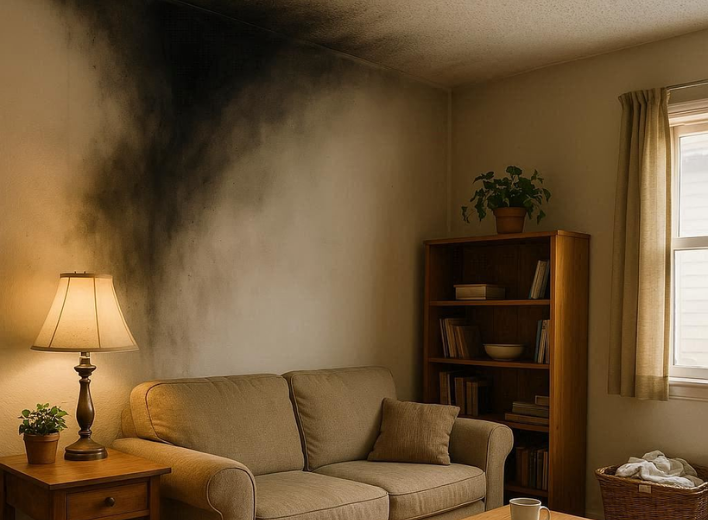
Discoloration on walls and ceilings is another common sign of smoke damage. Smoke particles can settle onto surfaces and cause staining, which may appear as yellow, brown, or black marks. These stains can be particularly noticeable on light-colored walls and ceilings, but they can also be present on darker surfaces. Discoloration is often more pronounced in areas that were directly exposed to the fire, but it can also spread to other parts of the home.
The presence of discoloration is not only unsightly but also indicative of deeper damage. Smoke particles can penetrate into paint, wallpaper, and drywall, causing permanent staining and degradation of materials. Over time, this can lead to peeling paint, bubbling wallpaper, and weakened structural integrity. Additionally, the chemicals in smoke can react with moisture and other elements in the environment, leading to further discoloration and damage.
Addressing discoloration on walls and ceilings often requires a combination of cleaning and restoration efforts. This may involve washing surfaces with specialized cleaning products, repainting, or even replacing damaged materials. In some cases, professional restoration services may be necessary to fully address the damage and prevent it from recurring. Taking action to address discoloration can help restore the appearance and integrity of your home.
Warning Sign 3: Stains on Fabrics and Upholstery
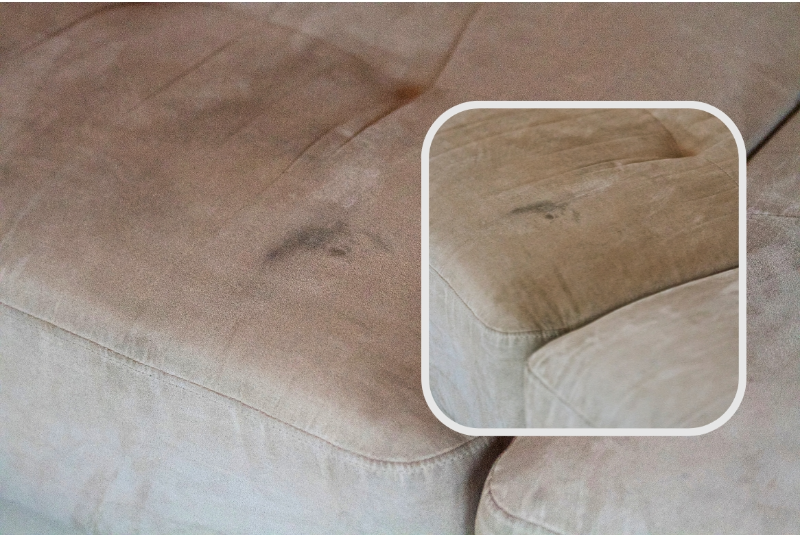
Stains on fabrics and upholstery are another telltale sign of smoke damage. Smoke particles can easily settle into porous materials such as curtains, carpets, and furniture, leading to unsightly stains and discoloration. These stains can be particularly difficult to remove, as smoke particles can penetrate deep into the fibers of fabrics and upholstery. In addition to being visually unappealing, these stains can also release odors and contribute to poor indoor air quality.
Stains on fabrics and upholstery are often more noticeable in areas that were directly affected by the fire, but they can also spread to other parts of the home through air currents and ventilation systems. The presence of stains can indicate that smoke particles have infiltrated various parts of your home, potentially causing further damage to materials and surfaces. Additionally, the chemicals in smoke can react with other substances in the environment, leading to further staining and degradation of fabrics and upholstery.
Addressing stains on fabrics and upholstery often requires a combination of cleaning and restoration efforts. This may involve deep cleaning with specialized products, professional cleaning services, or even replacing heavily damaged items. Taking action to address stains can help improve the appearance of your home and create a healthier living environment. Regular maintenance and cleaning can also help prevent the buildup of smoke particles and reduce the risk of future stains.
Warning Sign 4: Residue on Surfaces
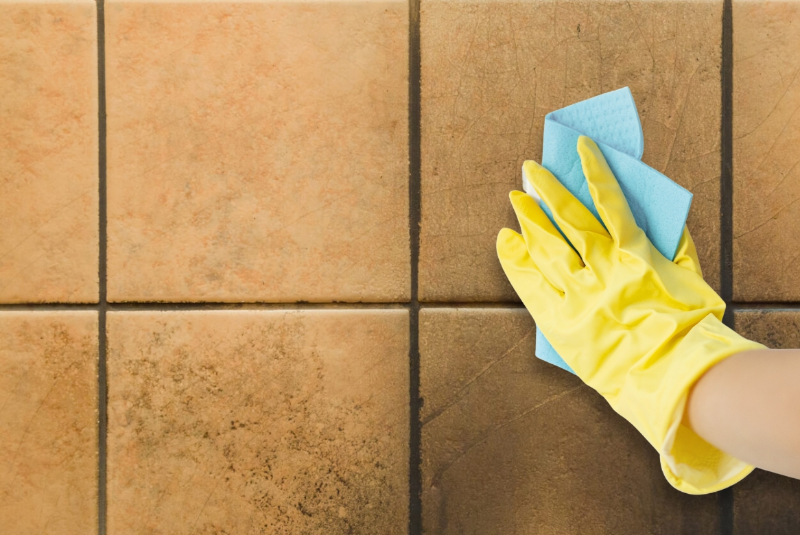
Residue on surfaces is another common sign of smoke damage. Smoke particles can settle onto various surfaces in your home, leaving behind a fine layer of residue that can be difficult to remove. This residue can be particularly noticeable on smooth, non-porous surfaces such as countertops, windows, and appliances. In addition to being visually unappealing, this residue can also be a source of odors and contribute to poor indoor air quality.
Residue on surfaces can be a result of both direct exposure to the fire and the spread of smoke particles through air currents and ventilation systems. The presence of residue can indicate that smoke particles have infiltrated various parts of your home, potentially causing further damage to materials and surfaces. Additionally, the chemicals in smoke can react with moisture and other elements in the environment, leading to further residue buildup and damage.
Addressing residue on surfaces often requires a thorough cleaning process. This may involve using specialized cleaning products designed to remove smoke residue, as well as regular maintenance and cleaning to prevent the buildup of particles. In some cases, professional cleaning services may be necessary to fully address the residue and prevent it from returning. Taking action to address residue on surfaces can help improve the appearance and cleanliness of your home, as well as create a healthier living environment.
Warning Sign 5: Changes in Air Quality

Changes in air quality are another important sign of smoke damage. Smoke particles can linger in the air long after a fire has been extinguished, leading to poor indoor air quality and potential health risks. These particles can be inhaled, causing respiratory problems, skin irritation, and other health issues. In addition to the physical health risks, poor air quality can also affect your overall well-being, leading to fatigue, headaches, and other symptoms.
Changes in air quality can be difficult to detect without specialized equipment, but there are some signs that can indicate a problem. If you notice a persistent smoky smell, increased dust and particles in the air, or an increase in respiratory symptoms among household members, it may be a sign of poor air quality due to smoke damage. Additionally, the presence of smoke particles in the air can contribute to the buildup of residue on surfaces and other signs of smoke damage.
Addressing changes in air quality often requires a combination of cleaning and remediation efforts. This may involve using air purifiers, ventilating your home, and cleaning surfaces to remove smoke particles. In some cases, professional air quality testing and remediation services may be necessary to fully address the issue and improve indoor air quality. Taking action to address changes in air quality can help protect your health and create a more comfortable living environment.
Warning Sign 6: Electrical Issues

Electrical issues can also be a sign of smoke damage. Smoke particles can infiltrate electrical systems and components, leading to malfunctions and potential hazards. This can include issues such as flickering lights, tripped circuit breakers, and malfunctioning appliances. In addition to being a source of inconvenience, electrical issues can also pose a serious safety risk, as they can lead to electrical fires and other hazards.
The presence of electrical issues can indicate that smoke particles have infiltrated various parts of your home’s electrical system, potentially causing further damage and increasing the risk of future problems. Additionally, the chemicals in smoke can react with electrical components, leading to corrosion and degradation of materials. If you notice any unusual electrical issues or malfunctions, it’s important to address them promptly to prevent further damage and ensure the safety of your home.
Addressing electrical issues often requires the expertise of a professional electrician. This may involve inspecting and cleaning electrical components, repairing or replacing damaged parts, and ensuring that your electrical system is in good working order. Taking action to address electrical issues can help prevent future problems and ensure the safety and functionality of your home’s electrical system.
Common Causes of Smoke Damage in Homes
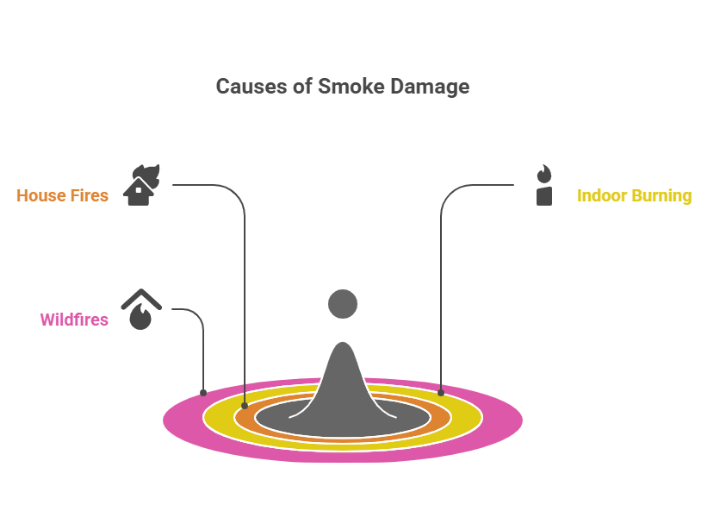
Smoke damage can originate from a variety of sources, each with its own set of challenges and risks. House fires are the most obvious cause, but even small incidents can produce significant smoke damage. Electrical malfunctions, unattended cooking, and heating equipment are common culprits of residential fires. These incidents not only cause immediate damage but also leave behind lingering smoke that can infiltrate various parts of the home.
Another source of smoke damage is the use of candles, incense, and other indoor burning items. While these may seem harmless, prolonged use can introduce smoke particles into the air, which then settle onto surfaces and fabrics. Over time, this can lead to discoloration, persistent odors, and potential health hazards. Even outdoor sources, such as wildfires, can lead to smoke damage. Smoke can enter homes through windows, doors, and ventilation systems, leaving behind residue and compromising indoor air quality.
Understanding the common causes of smoke damage can help homeowners take preventive measures. Regular maintenance of electrical systems, safe cooking practices, and proper ventilation can reduce the risk of fires and smoke infiltration. Additionally, being mindful of indoor burning activities and monitoring air quality during wildfire seasons can help mitigate the impact of smoke on your home. Awareness and proactive measures are key to preventing and addressing smoke damage effectively.
The Importance of Early Detection

Early detection of smoke damage is crucial for mitigating its impact on your home and health. Smoke particles are tiny and can easily penetrate into materials and surfaces, making them difficult to remove once they have settled. The longer smoke damage goes unnoticed, the more entrenched it becomes, leading to more severe consequences. By identifying the signs of smoke damage early, you can take swift action to remediate the issue and prevent further harm.
One of the primary reasons early detection is important is the health implications of prolonged exposure to smoke. Smoke contains a variety of harmful chemicals and particles that can cause respiratory problems, skin irritation, and other health issues. Children, the elderly, and individuals with pre-existing health conditions are particularly vulnerable to the effects of smoke exposure. Identifying and addressing smoke damage promptly can help protect the health and well-being of your family.
Early detection also helps preserve the structural integrity and aesthetic value of your home. Reviewing a professional guide to fire restoration shows the exact steps pros take to halt smoke deterioration before it spirals. Smoke damage can lead to discoloration, staining, and corrosion of materials, which can be costly to repair or replace. By catching these issues early, you can prevent extensive damage and maintain the beauty and value of your home. Regular inspections and being vigilant about the signs of smoke damage can save you time, money, and stress in the long run.
Conclusion: Taking Action Against Smoke Damage
Smoke damage is a serious issue that can have long-lasting effects on your home and health. By understanding the warning signs of smoke damage and taking prompt action to address them, you can protect your home and loved ones from the harmful effects of smoke. From unexplained odors to discoloration on walls and ceilings, stains on fabrics and upholstery, residue on surfaces, changes in air quality, and electrical issues, these signs can indicate underlying smoke damage that needs to be addressed.
Taking action against smoke damage often involves a combination of cleaning, remediation, and professional services. Start by evaluating a local contractor in Lorton so you can partner with a certified team that understands smoke-specific challenges. This may include deep cleaning of surfaces and materials, using air purifiers and ventilation, and repairing or replacing damaged components. Regular maintenance and vigilance can also help prevent future smoke damage and ensure that your home remains a safe and healthy living environment.
Don’t let smoke damage silently compromise your home. By recognizing the warning signs and taking proactive measures, you can safeguard your sanctuary and protect the health and well-being of your family. Remember, early detection and prompt action are key to mitigating the impact of smoke damage and preserving the beauty and integrity of your home.

